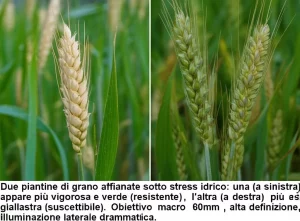Nursing Interns e Stress: What’s REALLY Going On? (And Who’s at Risk?)
Hey there! Ever wondered what it’s *really* like for those bright-eyed intern nursing students? You know, the ones just starting to navigate the often-choppy waters of clinical practice. Well, let me tell you, it can be a whirlwind, and a big part of that is something called mental workload (MWL). It’s a bit of a buzzword in human factors and ergonomics, but basically, it’s about how much brainpower a task demands. Think perception, thinking, decision-making, communication – all that good stuff!
Now, here’s the kicker: while everyone agrees MWL is super important, especially in healthcare, getting a single, neat definition? Not so easy! It’s like trying to catch smoke. But we generally understand it as the cognitive resources we pour into tasks. For intern nursing students, this is crucial. They’re the future of nursing, a profession already facing shortages. Their MWL can seriously impact their well-being, how they learn, and even patient safety. Yikes!
Why We Needed a Fresh Look
So, we know high MWL isn’t great. It can lead to burnout and, indirectly, more patient safety slip-ups. Nurses are the frontline heroes spotting and stopping errors, so if our future nurses are already overloaded, that’s a problem. Previous studies have poked around at this, looking at things like age, gender, and education. And get this – how we cope with stress (our coping strategies) plays a massive role. Positive coping? Less stress. Passive or negative coping? More stress, more burnout. Makes sense, right?
But here’s where things get interesting. Most research looked at these factors one by one, in a straight line. Life, and especially the brains of busy nursing interns, isn’t always that simple! We suspected there might be different groups or patterns of students experiencing MWL in unique ways. That’s where a cool technique called Latent Profile Analysis (LPA) comes in. It’s like a super-smart sorting hat that groups individuals based on their shared characteristics, rather than just looking at averages. We wanted to use LPA to see if we could find these hidden groups among intern nursing students based on their MWL.
How We Dug In: The Nitty-Gritty (But Fun!) Details
We got in touch with 320 intern nursing students from five hospitals in Guangxi, China. After a bit of filtering (like making sure they didn’t just click the same answer for everything – we’ve all been tempted!), we had a solid group of 302 participants. These students were all in clinical practice, gave us the thumbs up to join, and hadn’t had any major life upheavals recently.
To measure their MWL, we used the NASA-Task Load Index (NASA-TLX). It sounds like something for astronauts, and it kind of is! It measures six dimensions: mental demand, physical demand, temporal demand (how rushed you feel), effort, frustration, and how well you think you performed. We also gathered info on their demographics (age, gender, education, income, etc.), their perceived social support (using the PSSS), and their coping styles (using the SCSQ).
We crunched the numbers using some fancy software (Mplus for the LPA and SPSS for other stats). The LPA helped us see if distinct patterns of MWL emerged from the NASA-TLX scores. We looked for the model that best fit the data – not too simple, not too complicated, just right, like Goldilocks finding her porridge. And guess what? We found some really clear patterns!

The Big Reveal: Three Types of Interns Under Pressure!
Our LPA didn’t just give us a blurry picture; it clearly pointed to three distinct patterns of mental workload among these intern nursing students. It was fascinating! Here’s the breakdown:
- Profile 1: The “Low MWL-High Self-Rated” Crew (14.9%)
These students (about 45 of them) were kind of cruising! They reported lower scores across all six MWL dimensions. This suggests they felt less mental, physical, and time pressure. Plus, they rated their own performance pretty highly. We’re talking strong adaptability, handling tasks with ease, and a good dose of professional identity and job satisfaction. They seemed to be thriving! - Profile 2: The “Moderate MWL” Majority (50.33%)
This was the biggest group, with 152 students. Their scores on the MWL dimensions were, well, moderate – sitting right between the other two groups. This suggests that most intern nursing students are in a state of “moderate pressure and balanced adaptation.” They’re managing, but there’s definitely a workload they’re juggling. - Profile 3: The “High MWL-Low Self-Rated” Group (34.77%)
This group, with 105 students, was feeling the heat. They had higher scores on mental demand, physical demand, and temporal demand. On top of that, they didn’t seem too confident in their own abilities, rating their performance lower. This points to considerable pressure and a lack of self-assurance.
It’s so important to see this heterogeneity. It’s not a one-size-fits-all situation when it comes to intern stress!
What Makes Them Tick? Predictors for Each Group
Okay, so we’ve got these three groups. But why do students fall into one group versus another? We looked at various factors, and some interesting predictors emerged when we compared the groups, particularly against the “High MWL-Low Self-Rated” group (our reference point).
For the “Low MWL-High Self-Rated” champs, a couple of things stood out:
- Age: Interestingly, younger students were more likely to be in this low-stress, high-confidence group compared to the high-stress group. Perhaps they bring a fresh perspective or haven’t yet accumulated the weariness that can come with prolonged exposure. (Although other research sometimes suggests older students cope better, so this is a nuance to explore!)
- Monthly Income (3000-5000 RMB): Students with a mid-range monthly income were more likely to be in this group. This suggests that having some financial stability, but perhaps not excessive pressure from very high or very low income-related expectations, might be beneficial.
- Shorter Internship Duration e Less Negative Coping: These also leaned towards this profile, meaning less time under intense pressure and better coping skills helped them stay in this more positive zone.
For the “Moderate MWL” group, the predictors compared to the high-stress group included:
- Internship Duration: Shorter internships were associated with this group too, suggesting that as internships drag on, the load might increase.
- Coping Strategies: Those using fewer passive or negative coping strategies tended to be in this moderate group rather than the high-stress one. So, how they deal with stress matters a lot!
- Educational Level (College Degree): Students with a college degree (as opposed to a bachelor’s, which might imply more advanced theoretical prep) were more likely to be in the moderate group. This is an interesting one – perhaps those with a bachelor’s feel more pressure to perform at a higher level immediately, or maybe the college-degree interns have different support structures.
- Monthly Income (<3000 RMB): Students with a lower monthly income were also more likely to fall into this moderate category compared to the high-stress group. This could mean that while financial strain is a factor, it might not push them into the *highest* stress category as readily as other factors.

So, What Does This All Mean for Our Future Nurses?
Discovering these patterns isn’t just academic navel-gazing; it has real-world implications! Nursing administrators and educators can use this info to tailor their support. It’s not about a blanket approach anymore.
For the “Low MWL-High Self-Rated” students: These guys are doing great! We should nurture their potential. Think about offering them advanced learning opportunities, like in-depth case studies or interdisciplinary teamwork simulations. Recognition for their high performance could also boost their engagement and keep them on a positive career track. They’re our future leaders and mentors!
For the “Moderate MWL” students (the majority): These students are managing, but they could use support to prevent them from tipping into the high-stress category. They seem to value practical skill development. So, how about enhancing traditional preceptor guidance with peer mentoring? Pairing them with exemplary senior interns who can share real-world tips could be super helpful. It’s about building their skills and confidence incrementally.
For the “High MWL-Low Self-Rated” students: This group needs our attention most urgently. They might be more introverted or sensitive to criticism, internalizing stress. We need to help them reframe “high mental workload” as a manageable part of clinical practice. Structured stress management interventions are key – things like mindfulness training, group discussions, and access to psychological counseling. Encouraging reflective practice and debriefing after challenging shifts can help them see their growth, build self-efficacy, and strengthen their professional identity.
It also seems crucial to pay extra attention to students who are younger, have a college degree (vs. bachelor’s in this context), lower monthly income, longer internships, and use passive coping strategies. Offering financial support where possible, beefing up internship programs with better support, and teaching effective coping skills could make a huge difference.
Let’s Be Real: No Study is Perfect
Of course, we’ve got to acknowledge some limitations. Our study was focused on students in five hospitals in one region of China, so the findings might not apply everywhere. Also, students reported their own MWL, and sometimes we’re not the most objective judges of ourselves, right? Plus, this was a snapshot in time (a cross-sectional study). It would be awesome to see future research track students over time, across different regions, and in various hospital settings to get an even richer picture.
Wrapping It Up: A Smarter Way to Support Our Interns
Using this person-centered approach, like LPA, really helps us see the individual differences among intern nursing students. It’s a big step up from just looking at averages. We’ve identified three distinct MWL patterns and some of the key factors that predict who falls into which group. This gives us a much more scientific and comprehensive basis for promoting their mental health and helping them build fulfilling careers in nursing.
The next step? Developing truly individualized intervention strategies based on these patterns. If we can do that, we can effectively reduce their mental workload, improve their professional quality, and boost their love for this incredibly vital profession. And that’s a win for everyone – the students, the healthcare system, and ultimately, the patients they care for.
Source: Springer







